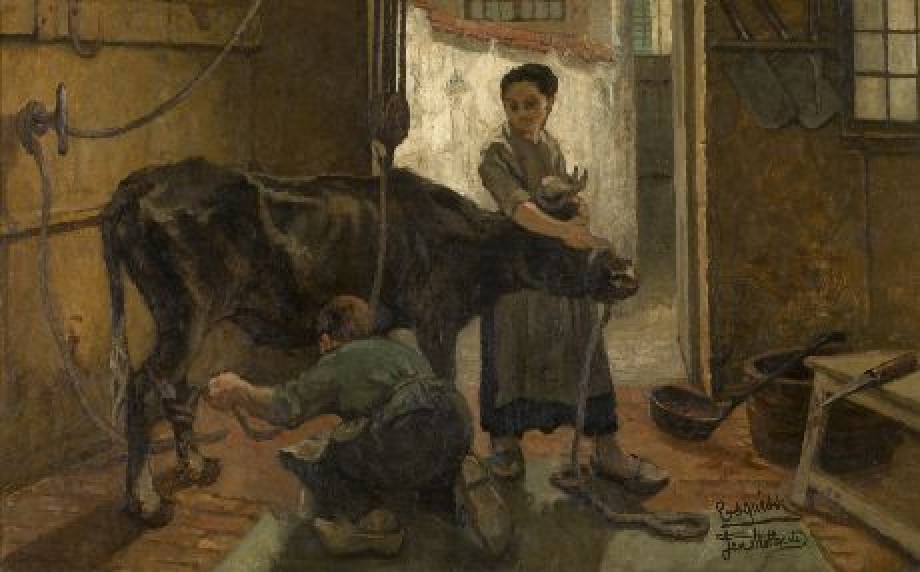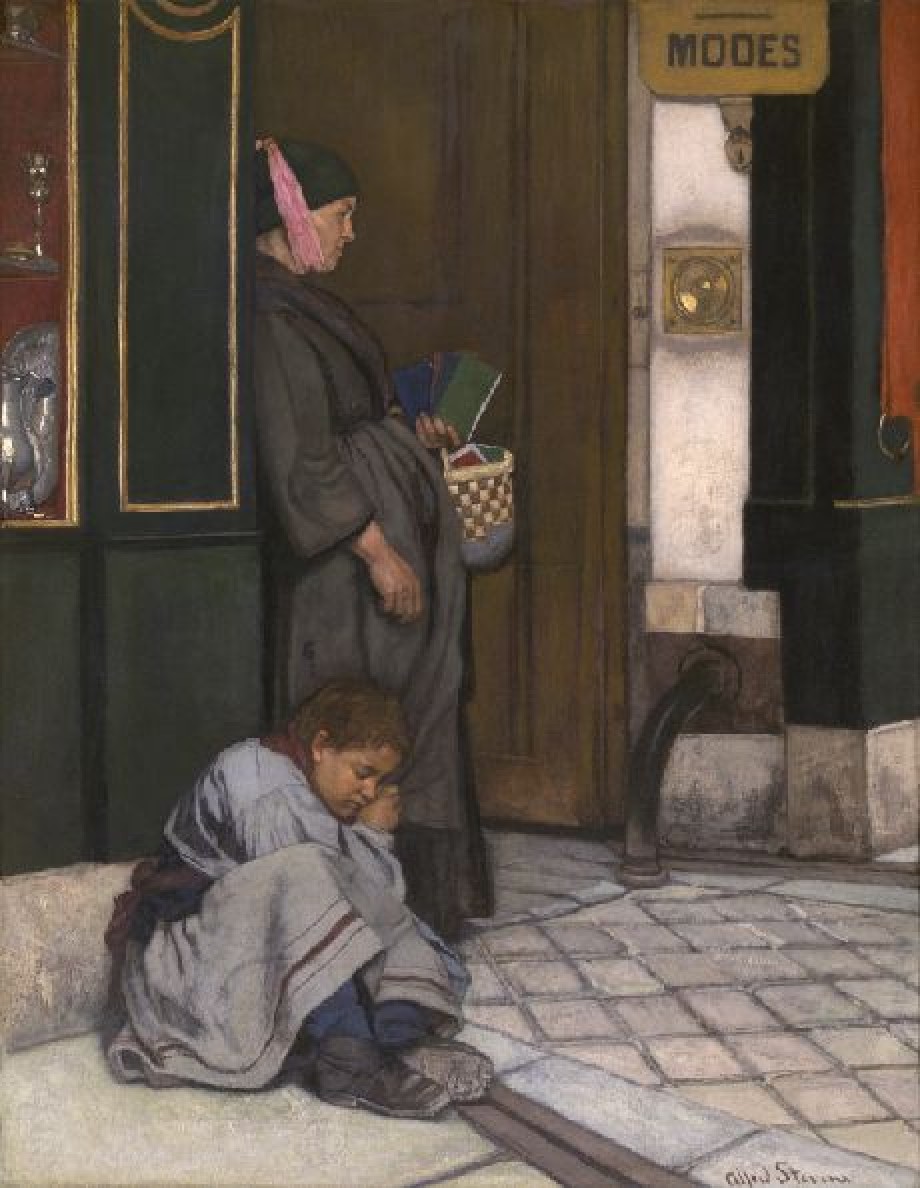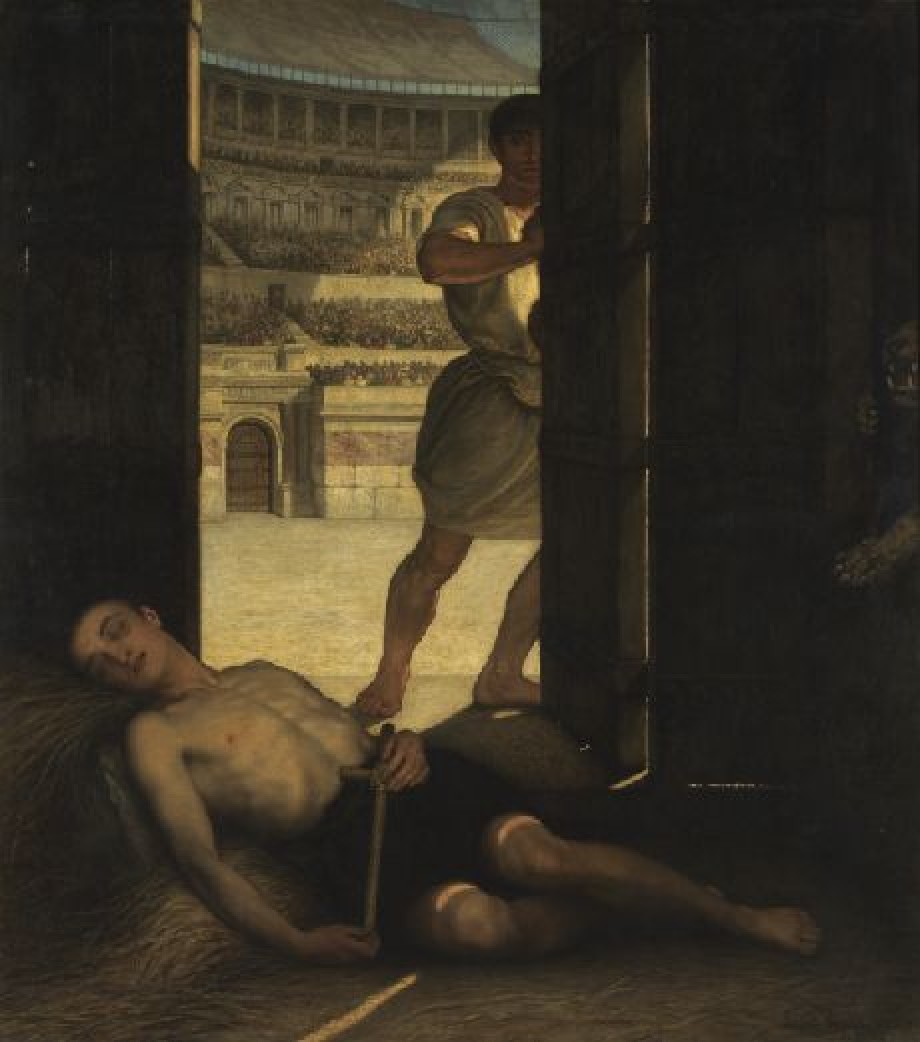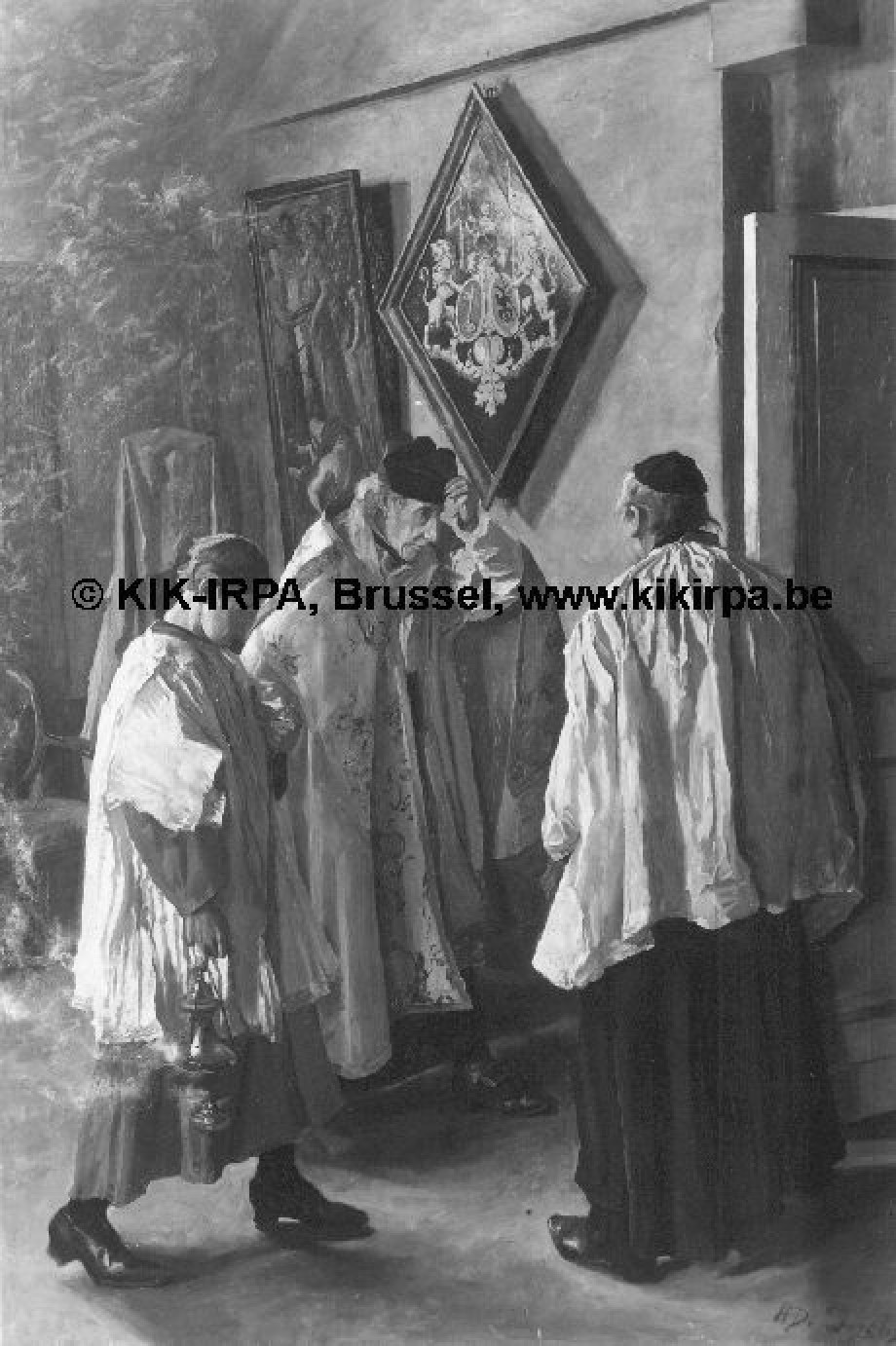Les Boëchelles. Two Walloon Peasant Children

Date
1888Period
19th centuryCollection
Royal Museum of Fine Arts Antwerp
At the Brussels Salon of 1881 the young Léon Frederic saw the painting Les foins of a peasant couple taking a rest in the hay by the French naturalist painter Jules Bastien-Lepage (Paris, Musée d’Orsay, inv. no. RF 2748). Like many other European artists, Frederic fell under the spell of Bastien’s socially engaged art, and from then on his painting…
Read more
At the Brussels Salon of 1881 the young Léon Frederic saw the painting Les foins of a peasant couple taking a rest in the hay by the French naturalist painter Jules Bastien-Lepage (Paris, Musée d’Orsay, inv. no. RF 2748). Like many other European artists, Frederic fell under the spell of Bastien’s socially engaged art, and from then on his painting traced the lives of peasants and labourers. Following the example of the nouvelle peinture, he depicted them in a very modern way: objectively and realistically, with particular attention to light, sky and texture.
The painting Two Walloon peasant children, also known as Les boëchelles – a Walloon dialect word meaning ‘girls’, was made in 1888. A work of 1886 with the same title is part of a series called The ages of the peasant (Brussels, Royal Museums of Fine Arts of Belgium, inv. nos. 3763-3767). It shows eight girls posing in a flowery meadow in the Ardennes village of Nafraiture. In this picture, by contrast, Frederic painted two girls in a dingy peasant interior. They are seated facing front on chairs, with wooden wainscotting and a blue weathered wall in the background. They are strikingly similar, with hair of the same colour, and are obviously sisters wearing the same clothes of a pale blue apron and large black clogs. They are a little tense, and look at the viewer bashfully. The youngest girl is taking refuge with her older sister, leaning against her. Big sister lets the fingertips of little sister’s hand rest in hers in a calming gesture. That tender interplay of hands is the centrepiece of the picture.
In 1883 Frederic began staying for weeks and sometimes months in picturesque Nafraiture. He made countless studies there of the landscapes and the villagers. A preparatory pencil drawing for Two Walloon peasant children (Brussels, Printroom KBR, inv. no. SV82014) shows two young girls seated in the countryside with the tower of Nafraiture church in the distance. That was a repetition of the composition with the girls in The ages of the peasant, but back in his studio he changed the setting, turning it into an indoor scene.
Two Walloon peasant children was an exploration of the classic genre of the double portrait, and more specifically of sisters. Theo Van Rysselberghe’s portrait of Jeanne and Marguerite Schlobach (Liège, Musée des Beaux-Arts de Liège, inv. no. 304) very probably served as Frederic’s model. The two artist friends shared the modern ambition to depict contemporary life, but while Van Rysselberghe portrayed the bourgeoisie Frederic placed the poor and hard-working peasantry before his easel.
Frederic’s two sisters posed anonymously, and only recently were they given a name. On the evidence of the portrait of Elodie Lamotte (Brussels, KMSKB, inv. no. 11638) they were identified as Aline and Elodie Lamotte of Nafraiture.
The painting was exhibited repeatedly, in Paris too, where it had a great success at the Salon du Champ de Mars in 1890. Renowned critics praised Frederic as a worthy successor to Jules Bastien-Lepage. The painting finally found its way into an art collection at the 1894 World’s Fair in Antwerp, when the Antwerp museum bought it from the artist for the modest sum of 3,500 francs.
Read less











